-
The Hitchcock 9
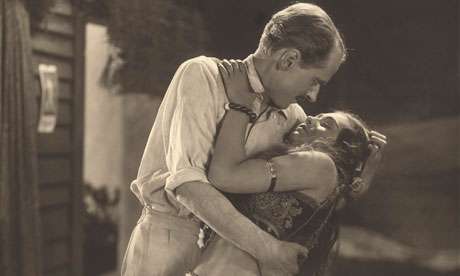
MILES MANDER AND NITA NALDI IN THE PLEASURE GARDEN - LEVETT AND HIS
NATIVE MISTRESS
1926 The Pleasure Garden
1926 The Lodger
1927 Downhill
1927 Easy Virtue
1927 The Ring
1928 The Farmer's Wife
1928 Champagne
1929 The Manxman
1929 Blackmail
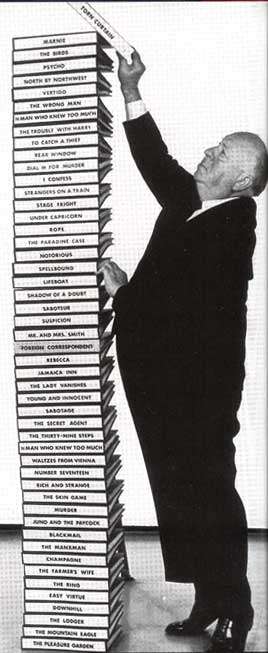
Two are lost from this period: the 1922 Number 13 and the 1926 The Mountain Eagle, putatively released in the US as Fear o' God. Downhill's US release title is When Boys Leave Home. Blackmail was made in a sound version which is available on DVD. From the silent Blackmail on, Hitchcock worked on talkies. Other than the silent Blackmail, all these are available on DVD. However I am watching the BFI-initiated restorations, which are not yet available. In addition, The Pleasure Garden is reportedly a major restoration, being a collation of many different copies leading to restored segments. "Major narrative strands and twists have been re-integrated" -BFI note[?] from press kit. The new restorations also preserve the alternating color tints of the films' segments, said to be particularly complex in the case of The Pleasure Garden.
Restorations by the BFI National Archive in association with STUDIOCANAL. Principal restoration funding provided by The Hollywood Foreign Press Association and The Film Foundation.
Reviews or discussions of each of these films will be found on the Festival Coverage thread for San Francisco 2013 Silent Film Festival - The Hitchcock 9, beginning HERE.
Last edited by Chris Knipp; 06-29-2013 at 05:50 PM.
-
The Hitchcock 9
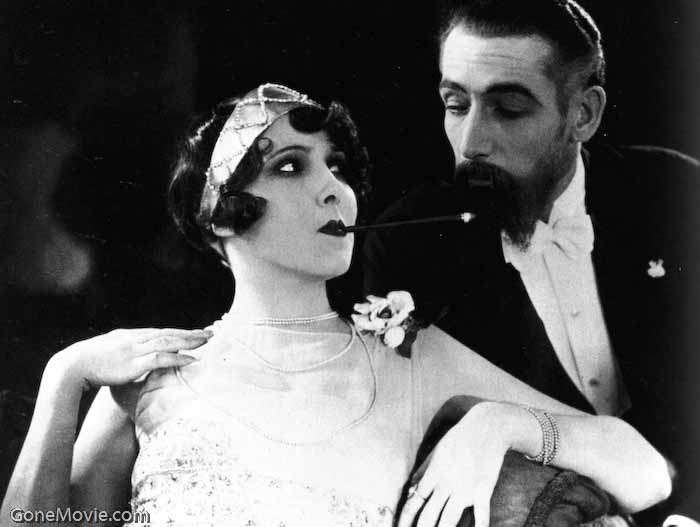
CARMELITA GERAGHTY AND KARL FALKENBERG IN
THE PLEASURE GARDEN
The Pleasure Garden (Mar. 1926)
The Pleasure Garden, first remaining Hitchcock silent film, is a conventional love melodrama of the period that focuses on two chorus girls, one frivolous and one serious. As has been pointed out Hitchcock shows visual flair from the start in the way he uses closeups of the chorus girls' legs, and a striking image of a thin stairway. However, the unrolling of the story is often obvious, starting with the combination of a show business beginning and an exotic end.
The dates given with the titles are the release dates listed in the BFI's basic Hitchcock 9 restorations flyer.
For the full Filmleaf Festival Coverage review click here.
Last edited by Chris Knipp; 06-29-2013 at 01:00 PM.
-
The Hitchcock 9
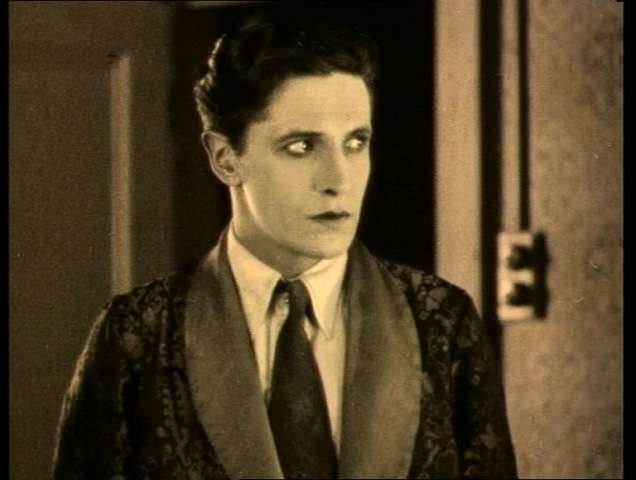
IVOR NOVELLO IN THE LODGER
The Lodger: A Story of the London Fog (Sept. 1926)
Lots of exciting street crowd scenes begin this thirller, which as is always pointed out, not only takes up for the first time Hitchcock's favorite subject of murder, but also includes the other favorite theme of a wronged innocent man, the lodger of the title, who is false accused of being the serial killer, The Avenger, an assassin, never seen, who repeatedly murders pretty blonde young women (another favorite theme) and leaves a note with this moniker with a triangle or delta sign. Unlike future Hitchcock thrillers, however, this film quickly stops focusing on the murders and zeros in on a handsome, apparently well-off young man who mysteriously comes to rent a room where most of the action takes place.
Full Festival Coverage section review.
Last edited by Chris Knipp; 06-29-2013 at 12:47 PM.
-
The Hitchcock 9
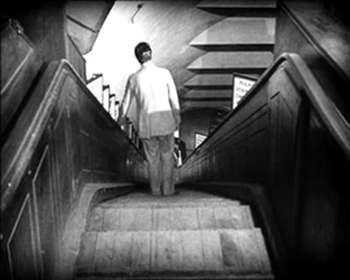
VOR NOVELLO IN DOWNHILL
Downhill (May 1927)
The Gainsborough production company wanted Ivor Novello back with Hitchcdock after the success of The Lodger, so Hitchcock adapted Novello's stage play, which he'd written with Constance Collier under the joint nom de plume of David L'Estrange. Though 34, Novello plays the lead role of Roddy Berwick, an outstanding public schoolboy who takes the rap when a pal is accused by a local tuck shop girl of making her pregnant. He's expelled, and when called a liar at home by his wealthy father for denying guilt, leaves home. A downward path follows, symbolized by a shot Hitchcock later thought too obvious of Roddy descending on a long escalator into the depths of the London Underground. Each time he seems abused by a woman, first the accusing tuck shop girl, then a greedy actress he falls for who uses up his inheritance from his godmother and tosses him out, then a nightclub Madam who makes him dance with lonely old women for pennies. A BFI note suggests this may reflect "the experience of Novello himself, a gay matinee idol oppressed by unwanted female attention." It also suggests Roddy is one of Hitch's "vulnerable blond" protagonists subject to his "fetishistic gaze." At least he qualifies as a wronged man, and Novello is an engaging actor to watch.
Last edited by Chris Knipp; 06-29-2013 at 05:33 PM.
-
The Hitchcock 9

THE TRICK MONACLE REFLECTION SHOT IN
EASY VIRTUE
Easy Virtue (Aug. 1927)
In Easy Virtue Hitchcock undertakes the tricky task of making a silent film out of a talky play by Noel Coward. But as the BFI blurb proclaims, "The camera's gaze gave the story a dimension unattainable on stage." Of course different angles -- and location shoots -- are possible to enhance the tale of a woman who, somewhat like Roddy in Hitchcock's previous film Downfall, is an innocent who runs into one trouble after another. But as a matter of fact the images of the film aren't as good as the others, because nothing but scratched prints could be found for the restoration. But that's not all bad, because the early sequences (after the opening courtroom scene) are of a woman getting her portrait painted, and the images of that are so blurry they look like paintings -- not an altogether bad effect. This becomes the story of an innocent's "downfall," much like Hitchcock's previous film, but with settings in a courtroom, in he South of France, and at a posh English country house very far from the humble London surroundings of the greengrocer's son, and deftly handled nonetheless.
Full Festival Coverage section review.
Last edited by Chris Knipp; 06-29-2013 at 12:57 PM.
-
The Hitchcock 9
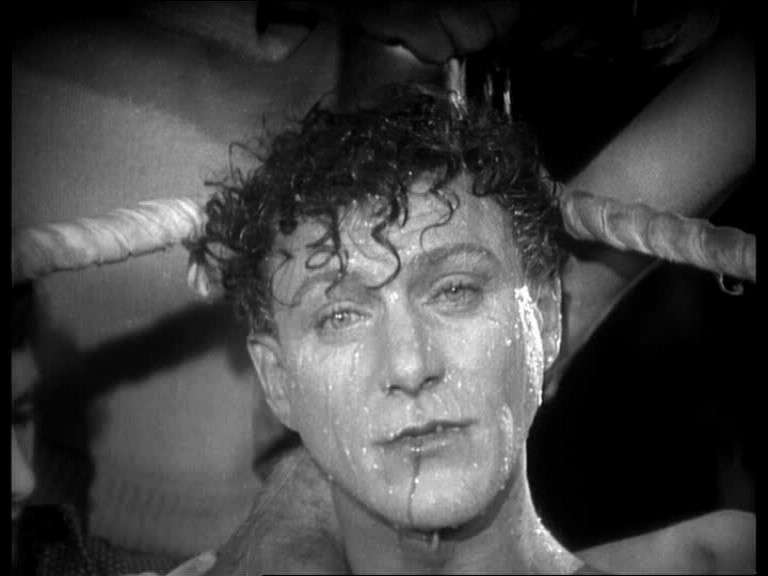
CARL BRISSON AS 'ONE ROUND' JACK SANDER IN THE RING
The Ring (Sept. 1927)
The Ring features the only Hitchcock screenplay he fully originated. It's a down-and-dirty carnival boxer's tale that's one of his most cinematic and visually rich silents, full of intense chiaroscuro and atmospheric, teeming crowd scenes with dramatic highlighted figures and faces further heightened by being ringed by darkness. (The BFI restoration DVD also has an unusually vivid sound accompaniment, a small jazz group score that fits the whole mood and enhances the scenes.) He may have been more at home here than with the la-de-dah world of the French Riviera and posh English country home life of Noel Coward's play he'd just dealt with in Easy Virtue. But the point is the way he demonstrates his quick adeptness at switching to another genre and milieu for each new film. The Ring is various and satisfying visually, and in contrast simple almost to the point of monotony in its theme. The better to be wordlessly cinematic, communicating with closeups and crosscutting so it often needs no dialogue boxes (which have been simplified, too, divested of their old fashioned frames).
Full Festival Coverage section review.
Last edited by Chris Knipp; 06-29-2013 at 01:00 PM.
-
The Hitchcock 9

LILLIAN HALL-DAVIS AND JAMESON THOMAS IN THE
FARMER'S WIFE
The Farmer's Wife (Mar. 1928)
"He'll be the next to wed now his daughter's marryin', says the handyman (Gordon Harker) after Farmer Sweetland's wife dies. "Why not? There's something magical in the married state. . . it have a beautiful side, Churdles Ash," answers Minta, the housekeeper (Lillian Hall-Davis). From a popular play, by Eden Phillpotts, Hitchcock's The Farmer's Wife is a broad comedy, with elements of the grotesque, about just this: a middle aged English country farmer whose wife has recently died decides upon the marriage of his daughter to seek another wife for himself. This may not seem at all a Hitchcockian theme, and the new direction may owe something to the director's having recently (with The Ring) joined the new production studio British International Pictures, moving from Gainsborough. But if we look at "Hitchcock's basic plot formations" as listed by Robin Wood, 1. the falsely accused man, 2. the guilty woman, 3. the psychopath, 4. espionage & political intrigue, 5. marriage, there marriage is, number five.
Read the full review in the Filmleaf Festival Coverage section.
Last edited by Chris Knipp; 06-29-2013 at 01:01 PM.
 Posting Permissions
Posting Permissions
- You may not post new threads
- You may not post replies
- You may not post attachments
- You may not edit your posts
-
Forum Rules






 Reply With Quote
Reply With Quote






Bookmarks